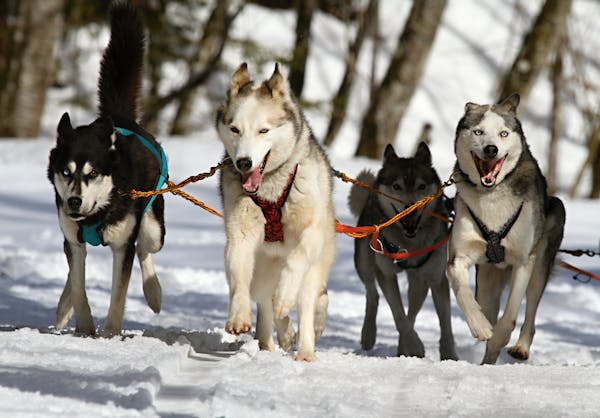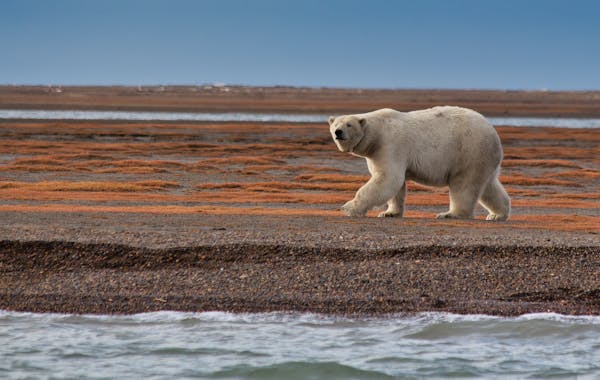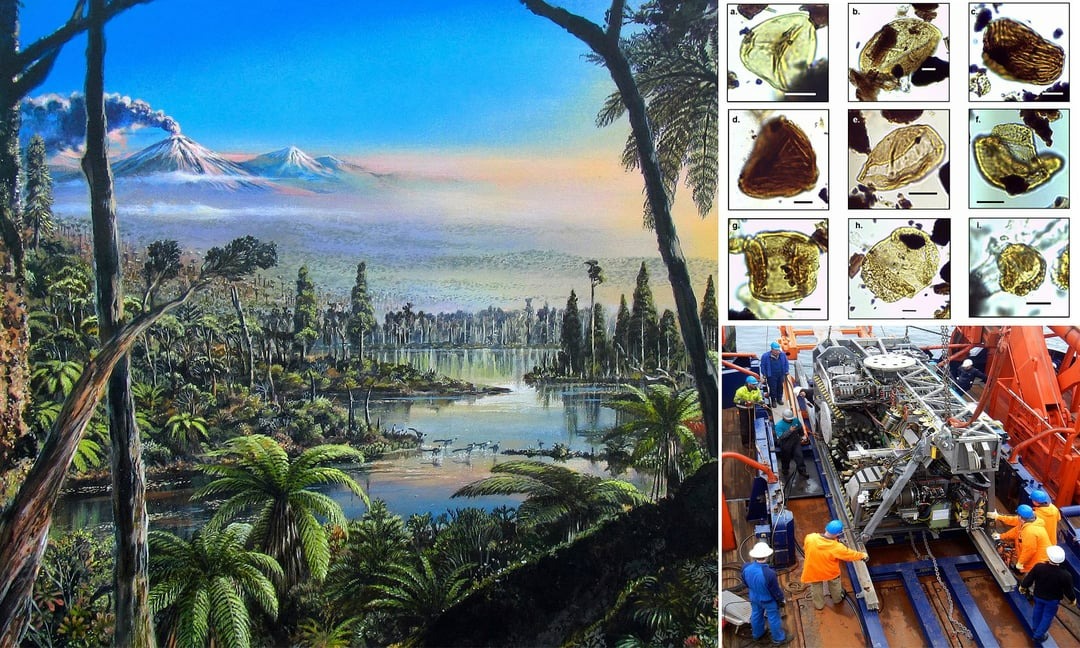Antarctica, the coldest and windiest place on Earth, has a bar at its bottom and used to be a rainforest. From its hidden history to unique geography and life at research bases, Antarctica offers a trove of secrets to explore.
You’ll find mountains under the ice


In 1958, scientists made a surprising discovery under the Antarctic ice: mountains! The Gamburstev Mountains were found when researchers, crossing ice two miles thick, unexpectedly stumbled upon a mountain range with peaks reaching 9,000 feet and spanning 750 miles.
Antarctica has 2 ATM machines
Surprisingly, if you find yourself in need of quick cash at McMurdo Station, the largest research station in Antarctica, you’re in luck. Wells Fargo installed two ATMs there in 1998. McMurdo operates like a small town, complete with coffee shops, a general store, and a post office. This closed micro-economy relies on cash to function smoothly.
However, only one of the ATMs is functional at a time. The dependable crew at McMurdo has been trained to repair the machines, swapping parts as needed to keep them running.


That blood-red waterfall
This unsettling scene could easily pass as a deleted scene from The Shining, but it’s actually caused by ferrous hydroxide, an iron-containing salt. The blood-red salt sludge is leaking from a glacier after a process scientists estimate took millions of years.
Known as “Blood Falls,” this eerie sight has become a point of interest for researchers and visitors alike.


There’s just one insect


Metallica played a concert there
In 2013, heavy metal icons Metallica made history as the first band to perform in Antarctica. They played for a crowd of 120 inside a protective dome on the continent. The show was aptly named “Freeze ‘Em All.”
To safeguard local wildlife from the intense amplification, the audience had to wear headphones during the performance.


Crystal-spewing volcano
One of the more extraordinary occurrences at the bottom of our planet is an active volcano named Mount Erebus, which literally ejects crystals. These unusually large minerals are called anorthoclase, a type of feldspar.
Scientists from the United States Antarctic Program admit that these volcanic crystals are “not well understood,” but Mount Erebus has been regularly spewing them since the 1970s.


A child was born in Antarctica as a political tactic
The first person ever born in Antarctica was an Argentinian man named Emilio Marcos Palma. In 1978, near the end of her pregnancy, Marcos’s mother was transported to the Esperanza Base in Antarctica by the Argentinian government, as a symbolic move to assert sovereignty over a portion of the Antarctic peninsula (Marcos’s father was in the military and in charge of the base). Although his birth didn’t significantly impact diplomatic relations, Marcos will always have an interesting fact to share at cocktail parties.
Several more children were born in Antarctica in the following years, with the latest birth recorded in 1985, but Marcos holds the distinction of being the first.


To work in Antarctica, you have to have your wisdom teeth and appendix removed


It’s the driest place on Earth


Humans didn’t lay eyes on Antarctica until at least 1820


Parts of Antarctica haven’t seen rain or snow for 2 million years
Talk about a dry spell: there are dry valleys in Antarctica that haven’t experienced precipitation for 2 million years! Even though 98% of the continent is covered in ice, this remains the driest place on the planet.
Despite the low precipitation, Antarctica is still intensely cold, with howling winds adding to the overall discomfort.


Husky dogs are not allowed


Antarctica is fantastic for hunting meteorites


Marathons are held there


The coldest place on Earth has a visitor’s book


There’s a lake in Antarctica that’s essentially bleach


There are peaks named after a woman’s breasts
Poor Una! Not much is known about her except that she must have left quite an impression on the men who named a particular geographical feature in the Antarctic Peninsula.
In a surprising move (just kidding!), it was changed to the more family-friendly but still suggestive “Una Peaks.”


There are no polar bears
Forget those cute maps and globes from your childhood: polar bears and penguins aren’t hanging out together at the bottom of the world. In fact, polar bears and penguins live at opposite poles, and there are no land mammals in Antarctica at all!
If you’re looking to spot some polar bears, you’ll have to head thousands of miles north to the Arctic, not the Antarctic.


A Norwegian man walked across Antarctica in 1996
In 1996, Norwegian explorer Børge Ousland achieved a remarkable feat by walking coast-to-coast across Antarctica entirely on his own. It took him 82 days to cover the 1,864-mile journey.
Not only did Ousland undertake this journey solo, but he also refused any outside support along the way.


Believe it or not, Antarctica used to be a rainforest
It’s astonishing, but 45 million years ago, Antarctica was actually a rainforest. The discovery of two turtle shells helped scientists uncover the continent’s fascinating history, as turtles require warm, rainforest-like conditions to live.
Antarctica likely also hosted other animals commonly found in warmer climates, such as marsupials.


It is home to the world’s southernmost bar


An American man once rode his bike to the South Pole
American Daniel Burton made headlines in 2014 for becoming the first cyclist to travel from the Antarctic coast to the South Pole. He began his journey on December 1, 2013, and arrived at the pole on January 21, 2014.
Interestingly, Burton’s fifth great-grandfather was American frontiersman Daniel Boone.


A subglacial lake could hold the key to exploring Jupiter’s moon Europa


A treaty bans military activity in Antarctica


Mining is prohibited


For most of the year, your facility is physically inaccessible, so you’re on your own.
During the Antarctic winter, which typically lasts from February through October, most research facilities become inaccessible to the outside world. Extreme temperatures prevent planes from flying over the continent, with temperatures dropping as low as minus 100 degrees Fahrenheit – twice as cold as the temperature at which gasoline freezes. Researchers are essentially on their own for nine cold and isolated months.
The crew that stays on the base during the Antarctic winter, known as the over-wintering crew, find unique ways to entertain themselves. For example, some scientists join the 300 Club, a daring group that experiences a 300-degree temperature change by first going into a 200-degree sauna, then dashing out into the minus-100-degree Antarctic tundra unclothed. Others prefer more traditional forms of entertainment, such as movies and games.


The constant darkness or constant light in Antarctica can disrupt your body clock.
Light, whether from the sun or electronics, can disrupt people’s circadian rhythms, also known as their body clocks. Antarctica experiences seasons differently than most of the rest of the world. Instead of traditional four seasons, Antarctica has summer, which occurs from about October to February, and winter, which is the rest of the year.
During the summer, the closer someone is to the South Pole, the more daylight they will experience. The southernmost points of the continent don’t experience any darkness during the summer. In the winter, it’s the exact opposite. Researchers and scientists are plunged into nine months of darkness. Meteorologist Alex Gaffikin explained how it affected her body to Reuters, saying, “In the depths of winter waking up was a struggle. With 24 hours of darkness, my body clock had gone haywire and I’d usually wake up feeling quite lethargic.”


You’re constantly surrounded by other people in Antarctica
Roughly 70 research facilities, operated by more than 30 countries, are spread across Antarctica, and they all share one common feature: No one is ever alone. Except for brief moments when someone is using the restroom or taking a short shower, there are always other people in the same space.
It’s not just about close quarters; there’s safety in numbers, especially in potentially hazardous climates like Antarctica. Dr. Nerida Wilson, who works on a research ship in Antarctica, explained to HowStuffWorks that “because of safety, you can’t always roam the decks of the ship alone, so mostly you are in company.”


Sensory deprivation is practically guaranteed in Antarctica


Static electricity is a problem
Antarctica, despite its layers of heavy ice, is technically a desert. The cold, dry climate creates perfect conditions for static electricity, especially when it’s windy.
This static electricity isn’t just about making researchers’ hair stand on end or giving them random shocks. If strong enough, it can damage unprotected electronic equipment, potentially disrupting off-site research projects.


You could find yourself traveling to remote field sites and camping out
Traveling isn’t much of an option during the brutally cold Antarctic winter. However, during the summer, many researchers head out to set up camp for remote research. For example, scientists studying glacial patterns and the Antarctic ice sheets often camp out in groups of three to ten people.
They typically reach these remote research areas by helicopter from a larger base. During this research period, which can last up to three months, these scientists are completely self-sufficient. There are no showers or personal phone calls. In case of emergency, researchers use radios to contact the bases for assistance.


Showers are extremely short
You might think that as a researcher stuck in the coldest place on Earth, you’d get to relax with a nice, hot shower at the end of the day. Unfortunately, long showers are a luxury for those living in Antarctica’s research facilities.
Meteorologist Alex Gaffikin explained to Reuters how showering works in Antarctica:
“I’d probably been on the research station a matter of minutes before the plumber Cuz warned me against long ‘Hollywood showers.’ The usual procedure was tap on, tap off, soap up, rinse off. He was right, because later on I’d join a team to dig ice for over half an hour to melt down for water.”


There’s not much to smell in Antarctica, aside from other people
In Antarctica, there aren’t many strong scents aside from those of fellow researchers and scientists. Paul Doherty, a late teacher and senior scientist at San Francisco’s Exploratorium museum, explained the lack of aromas in Antarctica in a 2001 blog post:
“Oddly enough, there are very few smells in Antarctica. Ice and snow have no smell, and in the cold temperatures, everyday objects hold onto their aromatic chemicals. So when you come across an aroma, it stands out like a black volcanic rock on a snowfield.”
Dr. Jenny Baeseman discussed the sensation of scent with HowStuffWorks, noting that her sense of smell returned strongly once she left Antarctica:
“When you’re coming back on the plane from McMurdo to New Zealand, about three-quarters of the way back, you can start smelling plants. Your sense of smell is so desensitized that the smell of pollen in the air just washes over you. It’s incredible.”


There’s satellite-generated broadband and phone service in Antarctica, but it’s mainly for professional use
Not everyone on Antarctic bases entertains themselves with computer games like R.J. MacReady in The Thing. In fact, despite all the advances in technology, scientists in Antarctica are left out when it comes to personal internet and phone access. The National Science Foundation forbids researchers from using internet or other communication devices for personal use if it interferes with work:
“Unless explicitly authorized, individuals do not have permission to disrupt any information system or network infrastructure. Individuals found to be in violation of this prohibition may be subject to appropriate administrative sanctions, civil liability, or… [prosecution].”
Skype, streaming services like YouTube, and other online activities that consume broadband are not allowed. However, some researchers have found ways around this restriction, such as forming underground gaming communities.


You make your own breakfast, but a chef takes care of the rest
In the mornings, most researchers and temporary residents of Antarctica are responsible for preparing their own breakfast. Those working the closing shift often bake bread or pastries for the next morning as well.
For other meals, a chef usually takes care of everyone, using dried and cured foods brought along for the duration of the stay.
“You have to use what you’ve got in the store – frozen stuff, tinned stuff, and, if you’re really desperate, the dried stuff,” explained Alan Sherwood, a chef at the Rothera Base in Antarctica, to Reuters.
In the early 20th century, Antarctic delicacies like seal brain and penguin breast were served to staff. However, with the introduction of wildlife protection laws, chefs started relying more on packaged foods.


Please SHARE this with your friends and family.







